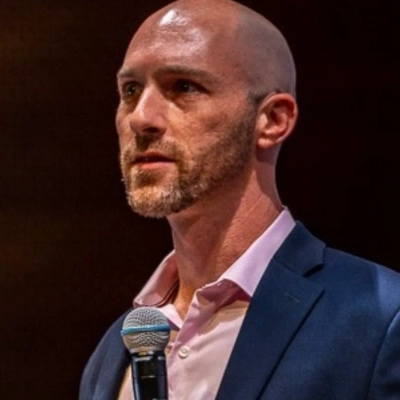Balancing Onboarding: Standardized Processes vs. Personalization
Effective employee onboarding requires a thoughtful balance between standardization and personalization, as leading HR professionals reveal in this comprehensive guide. The experts emphasize that while consistent processes create necessary structure, personalizing the experience demonstrates value for each new hire’s unique contributions. This strategic approach combines essential frameworks with individual customization to maximize engagement, retention, and long-term organizational success.
- Maximize ROI Through Structured Yet Customized Approach
- Preserve Safety Essentials While Personalizing Engagement
- Create Space for Communication and Scheduling Preferences
- Maintain Quality Standards With Personalized Recognition
- Keep Backbone Consistent With Role-Specific Elements
- Connect Learning Systems With Daily Work Tools
- Standardize Checkpoints While Offering Flexible Paths
- Implement Feedback Loops for Continuous Improvement
- Set Security Baseline Then Add Specialty Adjustments
- Balance Automation With Human Touchpoints
- Build Framework Not Script for Faster Integration
- Define Brand Guardrails While Allowing Creative Freedom
- Standardize the Why and Personalize the How
- Align Individual Talents With Organizational Purpose
- Combine Standard Checklists With Personal Goal Discussions
- Create Modular Framework With Feedback Loops
- Prioritize Personalization to Show Role Appreciation
Maximize ROI Through Structured Yet Customized Approach
At Hazan Consulting, we view effective onboarding as finding the sweet spot between consistency and individuality. Standardization creates necessary guardrails—ensuring every new hire receives the same essential information about culture, policies, and expectations. Yet onboarding also represents a critical moment to show how much we value each person’s unique role and contributions.
With one client, we implemented a standardized onboarding framework—a structured sequence of compliance steps, required trainings, and cultural touchpoints. We then built in flexibility through department-specific orientation and onboarding buddies who tailored the experience, particularly for specialized or technical roles. This approach maximized efficiency while accelerating role readiness.
For a high-growth founder-led company, we introduced standardized templates for necessary paperwork while encouraging personalized elements like founder welcome notes and role-specific milestone plans. We developed 30-60-90 day success maps customized by function but connected to a universal framework, helping new hires see how their work contributed to company goals.
The key consideration is ultimately about effectiveness and return on investment for both parties. Standardization delivers efficiency and faster productivity, while personalization fosters engagement and preparedness. When properly balanced, organizations achieve quicker ramp-up times, better retention, and stronger long-term impact from their talent investments.
Preserve Safety Essentials While Personalizing Engagement
In behavioral health, I always remind my team that safety protocols and evidence-based practices are non-negotiable, but how we engage families or adjust session frequency needs flexibility. I remember onboarding a therapist who felt boxed in by a rigid outline, and once we allowed them to adapt their style, client engagement improved noticeably. So my rule of thumb: preserve the essentials that ensure safety and quality, and personalize everything else that supports the therapeutic relationship.

Create Space for Communication and Scheduling Preferences
At Crown Billboard Advertising, we found success by creating a simple document outlining core onboarding processes while building in flexibility for individual needs. We established regular check-ins that went beyond standard project updates to understand each employee’s unique challenges and adjust accordingly. The key consideration is ensuring your standardized elements address universal needs while creating deliberate space for personalization, particularly around work scheduling and communication preferences. This balanced approach helped us maintain consistency while still supporting individual team member success.
Maintain Quality Standards With Personalized Recognition
In my experience with the event industry, having consistent onboarding markers matters, but making recognition personal is what sticks. When we introduced a standardized milestone for completing a setup protocol, we paired it with individualized recognition, like a team lunch or a simple handwritten note. It’s amazing how team morale went up once everyone hit the same standards but still felt celebrated in their preferred way. Time after time, when recognition felt generic, motivation dipped; customization always brought it back. The balance comes from being rigid about quality but flexible about how you honor it.

Keep Backbone Consistent With Role-Specific Elements
The real challenge is mixing structure with adaptability so every new hire feels both confident and recognized. At Finofo, for example, we created a standard onboarding track that explained our global payments infrastructure, but we layered in personalized mentorship depending on a person’s role. A growth manager might shadow partnership calls, while product specialists got workflow simulations. I’d suggest keeping the backbone consistent but weaving in hands-on elements that match their trajectory so it resonates more deeply.

Connect Learning Systems With Daily Work Tools
We’ve found success by integrating our standardized onboarding content directly into the workflows where employees actually spend their time. In our development team, for instance, we connected our Learning Management System with Jira so training modules are triggered based on specific project tickets the new hire is working on. This approach maintains consistent core learning objectives while personalizing the timing and relevance of materials to each employee’s actual work. The key consideration is finding technology bridges that can connect your standardized content repositories with the daily tools your team uses.

Standardize Checkpoints While Offering Flexible Paths
One key consideration is making sure every new hire reaches the same core competencies while allowing AI-driven flexibility to guide how they get there. The moment we standardized on checkpoints, confusion about ‘what success looks like’ basically vanished from our retros. I’ve seen AI tools adapt pacing, giving a fast-learner the freedom to move ahead while slowing down for someone who needs more context. It’s wild how quickly frustration calms down once you combine structure with personalization. My advice: lock the outcomes in stone, but let the path flex with the individual.

Implement Feedback Loops for Continuous Improvement
I’ve found feedback loops to be a great way to personalize onboarding without breaking standardization. At Tutorbase, we introduced short surveys after the first week, and the responses revealed which training modules felt either too repetitive or too light. Adjusting based on that input helped us maintain consistent structure while letting individuals feel heard. My suggestion: treat your onboarding like a living system that improves with each new hire’s experience.

Set Security Baseline Then Add Specialty Adjustments
In dental IT, the balance often comes down to security versus usability. I’ve learned to standardize cybersecurity protocols and HIPAA training—those are non-negotiable because they protect both patients and practices. But we make the onboarding personal by tailoring the workflow to each department, like front-desk staff versus hygienists, since their daily needs are very different. That way, the process feels practical while still being compliant. My suggestion: set security as the universal baseline, and then layer in specialty-specific adjustments to keep adoption smooth.

Balance Automation With Human Touchpoints
Finding the right balance between standardized onboarding and personalization requires a strategic approach to automation. At our organization, we implemented standardized elements through digital tools like chatbots for routine inquiries, while maintaining personalized touchpoints for more complex or sensitive aspects of the onboarding process. The key consideration is identifying which elements of onboarding truly benefit from human interaction versus which can be effectively standardized without sacrificing the employee experience. This targeted approach ensures consistency in critical areas while still making new team members feel individually valued.

Build Framework Not Script for Faster Integration
I see onboarding as a framework, not a script. Standardisation ensures consistency in tools, policies, and expectations, but flexibility allows us to tailor the experience to a person’s role and learning style. The key consideration is clarity—new hires should never feel lost, yet they should feel seen as individuals. Balancing both builds confidence early and helps people integrate faster.

Define Brand Guardrails While Allowing Creative Freedom
For me, the key is drawing a clear line between what defines the brand and what defines the person. When GRIN grew rapidly, we standardized our cultural and brand onboarding, but we personalized how creators and marketing hires learned to apply those values in campaigns. Someone from design might brainstorm with visuals, while a strategist built messaging examples. By keeping the guardrails tight but the creativity open, the process felt both unified and personally motivating.

Standardize the Why and Personalize the How
You know, for a long time, our onboarding was a one-size-fits-all process. We were hiring people for different roles with different skill sets, and a standardized onboarding process was a huge waste of time. It was impersonal and it didn’t get a new hire excited about the company.
The way we balance standardized onboarding with flexibility is to standardize the “why” and personalize the “how.” The key consideration is to make sure the onboarding is a reflection of your company’s values, not just a checklist of tasks.
From an operations standpoint, we have a standardized checklist of all the things a new hire needs to know to be a part of our team. But the “how” is personalized. A new hire who is a hands-on learner might get a different onboarding process than a new hire who is a visual learner. From a marketing standpoint, we created a personalized “welcome kit” for every new hire. It’s a personalized note from me, and a curated collection of our best content that explains our mission and our values. This is a marketing campaign for our newest team members.
The impact this had was a massive increase in our team’s engagement and their morale. Our new hires are more productive and more engaged from day one. My advice is that the best way to balance standardized onboarding with flexibility is to standardize the “why” and personalize the “how.” You have to see it as a chance to build a great team.

Align Individual Talents With Organizational Purpose
The onboarding process resembles the process of constructing scaffolding for a house. The standardized framework maintains everything in order while preventing essential steps from being omitted. The ability to personalize the process enables individuals to advance at their own speed while adding specific details that hold personal value. The absence of flexibility during onboarding creates two potential problems which result in employees either working at a slow pace or experiencing burnout before they achieve stability.
The main factor to consider during onboarding is alignment. The onboarding process needs to demonstrate how each person’s abilities and passions relate to the organization’s main purpose. People who understand their role in the mission from the beginning tend to become more dedicated and motivated. The main focus should be on helping new employees discover their purpose instead of forcing them to learn rules by heart.

Combine Standard Checklists With Personal Goal Discussions
The use of standardized onboarding procedures creates uniformity, but excessive strictness leads to new employee disengagement. I develop a standard checklist for all new hires yet reserve time for personal goal discussions and worry resolution. This approach enables new employees to understand fundamental requirements while maintaining flexibility in their onboarding experience. Your early involvement in decision-making processes communicates to new employees that their individuality matters to your organization.
The system needs to achieve equilibrium between organizational requirements and individual participation to maintain proper balance. The organization needs to maintain equal respect for its requirements and the personal input of each employee. The absence of balance between these elements leads to either disorganized or unengaging onboarding experiences. The correct balance between these elements creates conditions for employees to develop trust, which leads to long-term employment.

Create Modular Framework With Feedback Loops
Finding the right balance between standardized onboarding and personalization requires a core foundation of essential information that every new hire needs, coupled with customizable components based on role, experience level, and learning style. We recommend developing a modular onboarding framework where certain elements remain consistent across all departments while others can be tailored by direct managers to address specific team needs. A key consideration is regularly collecting feedback from recent hires about their onboarding experience to continuously refine both the standard and flexible elements of your process.

Prioritize Personalization to Show Role Appreciation
I would go more towards personalization even if it takes more time, as it ultimately shows new hires that you’re taking that extra step to onboard them efficiently and in a way that relates to their role (so you’re showing role appreciation and understanding from the outset).



